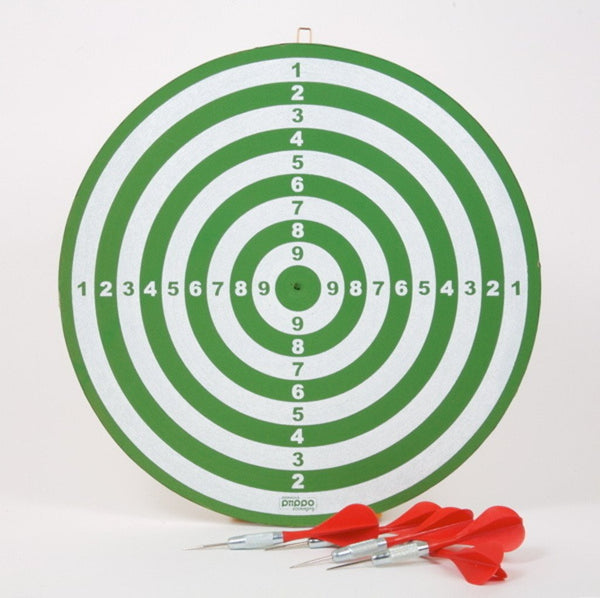THIS IS AN ARCHIVE OF EVERYTHING KIOSK HAS COLLECTED. TO MEET THE DIGITAL, WE HAVE A PHYSICAL, CURRENTLY IN STORAGE IN NEW YORK. NOTHING YOU SEE HERE IS FOR SALE. PLEASE USE AS A REFERENCE AND AN INSPIRATION AND PLEASE WRITE US IF YOU HAVE ANY QUESTIONS OR INFORMATION TO SHARE.
Finnish Dart Set
14"ø, each dart 5.5"
Paper, Metal & Plastic
FINLAND
Were you genuinely aware, prior to this moment, that Finnish darts existed? At their origin (in 1930), darts were called "arrows" (nuoli), made of nails, wood and cardboard. There was no dartboard, only ten circles drawn on a side of a tree. Directions please, from the Finnish Dart Association (in some very special way they say a lot about Finland): "The board hangs at the height of 150 cm measured from the throwing point to the middle of the target. The throwing distance for men and boys is five (5) meters, and for ladies and girls four (4) meters. The darts may be thrown one by one. If a dart breaks the line between two circles, the result is counted according to the inner circle. A dart that has fallen from the board may be renewed. When a dart attaches itself to a dart already on the board, the result of the dart is the same as the dart on the board. The referee stands behind the contestant during the throw. Unnecessary conversation between the referee and contestant is prohibited. The contestant himself/herself removes the darts from the board. If the contestant insists, the referee has to remove the darts from the board during a series of throws, and write down the score of the thrown darts. Disturbance of the contestant is not allowed. A contestant has the right to make a written protest to his/her own or another contestant's throw immediately. It is forbidden to compete under the influence of spirits or drugs." In 1968, the first Finnish Championships were organized in Espoo.
